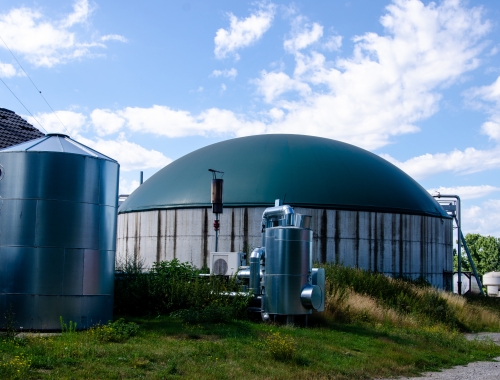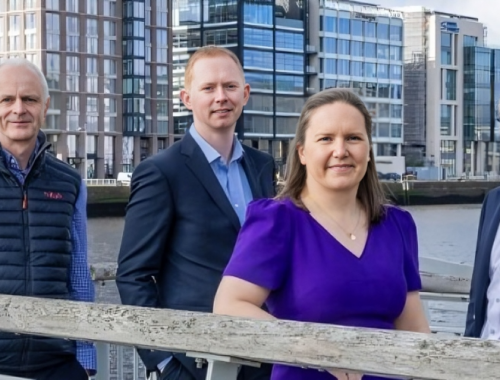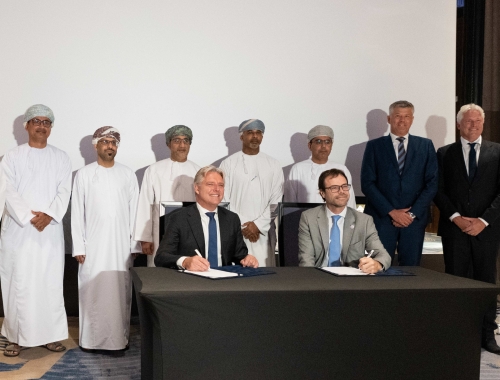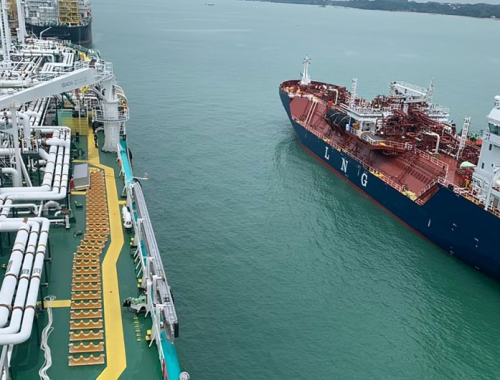Uphill battle for CO2 infrastructure
SUMMARY
The cancellation of Navigator CO2’s Heartland Greenway pipeline project illustrates the challenges faced by CO2 and CCS infrastructure proposals.
By Anna KachkovaThe administration of US President Joe Biden wants carbon capture and storage (CCS) to play a critical role in decarbonisation of the country as it pursues net zero greenhouse gas (GHG) emissions by 2050. However, the recent cancellation of a carbon dioxide (CO2) pipeline being proposed by Navigator CO2 after it ran into regulatory challenges illustrates the uphill battle that some CCS infrastructure projects are facing.
US oil and gas pipelines have been struggling for years with regulatory roadblocks and local and environmental opposition, which also culminated in project cancellations in some cases and lengthy delays in others. It now appears that CO2 pipeline projects could struggle with many of the same issues. This is despite the fact that CO2 infrastructure is likely to enjoy considerably more support at the federal level – at least from the Biden administration – owing to its decarbonisation potential. However, with CO2 pipelines regulated at the state level, local factors will be more important in determining which projects move forward.
Against this backdrop, the federal government will have to do more to promote development of CO2 pipelines and associated infrastructure if it wants to achieve its long-term decarbonisation goals. And developers may require additional incentives if they are seen to be put off by how challenging the regulatory review process can be.
Warning signs
The fate of Navigator’s Heartland Greenway project, one of the largest of its kind under development in the US, serves as a warning for CO2 pipeline developers. The 1,300-mile (2,092-km) CO2 pipeline would have spanned five states – Nebraska, South Dakota, Minnesota, Iowa and Illinois – and would reportedly have cost around $3.5bn to build. Navigator had been planning to capture CO2 emissions from over 30 ethanol plants across the five states, including 26 facilities operated by either Poet or Valero.
However, Navigator ran into various obstacles shortly after applying for permits across the relevant states. In Illinois, Navigator had to restart the permitting process in February after its first attempt failed. Illinois is where the CO2 transported via Heartland Greenway would have been sequestered, but initially Navigator did not sign enough agreements with residents living over the proposed CO2 storage site for its application to move forward.
In September, the company's permit application for the pipeline was rejected by regulators in South Dakota. The decision centred on concerns over the project’s safety, Navigator’s transparency and a lack of support from landowners along the pipeline’s route.
This came as a major blow for the project. Announcing Heartland Greenway’s cancellation in late October, Navigator cited the “unpredictable nature” of regulatory and government processes involved in moving forward and singled out South Dakota and Iowa as being particularly challenging.
Other major projects that are going through permitting processes will now be closely watched, and their outcomes have the potential to affect developer appetite for planning and building more CO2 pipelines in the future. Right now, the cancellation of Heartland Greenway is not the only worrying sign, with Summit Carbon Solutions, which is also proposing a major CO2 pipeline in the Midwest, struggling with regulatory roadblocks too.
Summit’s pipeline system would span North and South Dakota, Minnesota, Iowa and Nebraska, capturing CO2 from more than 30 ethanol plants across those states for storage in North Dakota. However, the company had permit applications rejected in both North and South Dakota. In North Dakota, the rejection came on the grounds that Summit had not demonstrated that the project would have minimal adverse effects on the environment and the citizens of the state. In South Dakota, the permit application was denied on the basis that it would violate county ordinances related to setbacks and other aspects of the pipeline route.
Since then, regulators in North Dakota have agreed to reconsider Summit’s application while the company has previously said it would also reapply for its permit in South Dakota. Nonetheless, the pipeline’s targeted start date has been pushed back two years from 2024 to 2026 in the wake of the regulatory setbacks.
Indeed, Summit could even potentially benefit from the cancellation of Heartland Greenway by inviting Navigator’s potential clients to use its planned pipeline for CO2 transportation instead. The same day the Heartland Greenway cancellation was announced, Summit reaffirmed its commitment to its own CO2 pipeline to local media in South Dakota.
Next steps
Summit and others trying to advance CO2 pipelines will be closely watched by others considering developing CCS infrastructure of their own. One of the challenges for CO2 pipeline operators is that they face opposition both from those sceptical of decarbonisation efforts and from environmental groups concerned about how CCS can prolong the lifespan of fossil fuel projects, as well as from locals on proposed pipeline routes. Supporters of the CCS industry acknowledge that more needs to be done to win support both locally and more broadly.
“We all need to do a better job educating the public on both the impeccable safety record for CO2 pipelines and the critical role they play in helping the US produce more reliable, affordable energy while reducing emissions,” non-profit organisation ClearPath’s CEO, Rich Powell, tells Gas Pathways.
ClearPath, which is aimed at advancing policies that accelerate innovations to cut global energy emissions, believes there are steps that can be taken at several levels to help promote development of CCS. For example, even though there is no federal siting authority unless a given CO2 pipeline crosses federal land, Powell highlights other ways in which the federal government can help.
“The federal government, specifically the EPA [Environmental Protection Agency] should be focusing on getting Class VI well applications permitted so that when these projects capture CO2 and we start building the midstream infrastructure, there will be certainty on where the CO2 will be safely sequestered,” says Powell.
From the perspective of developers, meanwhile, community engagement is expected to be critical to their success.
“Project developers who proactively engage landowners and community stakeholders about the benefits of the project often have a better outcome,” says Powell. “Some developers have held public workshops that describe the route of the project and what to expect in terms of construction and timing.”
While some developers will find it more difficult than expected to advance their project, this also varies significantly based on which states they would build infrastructure in, among other factors.
“In general, CO2 pipeline projects located in states or areas with active oil and gas activity have less state and public opposition,” says Powell. “Additionally, pipeline projects that are intrastate often face less opposition than interstate projects.”
Indeed, much of the CCS infrastructure planning and development currently underway in the US is happening on the Gulf Coast. The region – particularly Texas and Louisiana – benefits from extensive oil and gas and industrial infrastructure, suitable geology for CO2 sequestration close to industrial sources of emissions and comparatively favourable regulatory environments. But for the Biden administration – and any future administration in favour of a net-zero emissions target – to achieve its decarbonisation goals, CCS infrastructure will have to be built out significantly beyond the Gulf Coast too.
“The development and deployment of more CCUS projects and related infrastructure are essential to reducing CO2 emissions from the electricity and industrial sectors, domestically and globally,” says Powell. “In addition to earning support for these projects, we believe more states need to have the primacy to permit Class VI sequestration wells.”
Powell sees considerable potential for progress thanks to the trajectory of recent investments in the industry.
“Financial support is also a big driver of innovative technologies and the momentum for CCUS in the United States has accelerated this year with more than $6.4bn invested, more than doubled from last year,” he says. “This investment could allow a number of new capture, utilisation and/or storage projects to be deployed within the next decade.”







